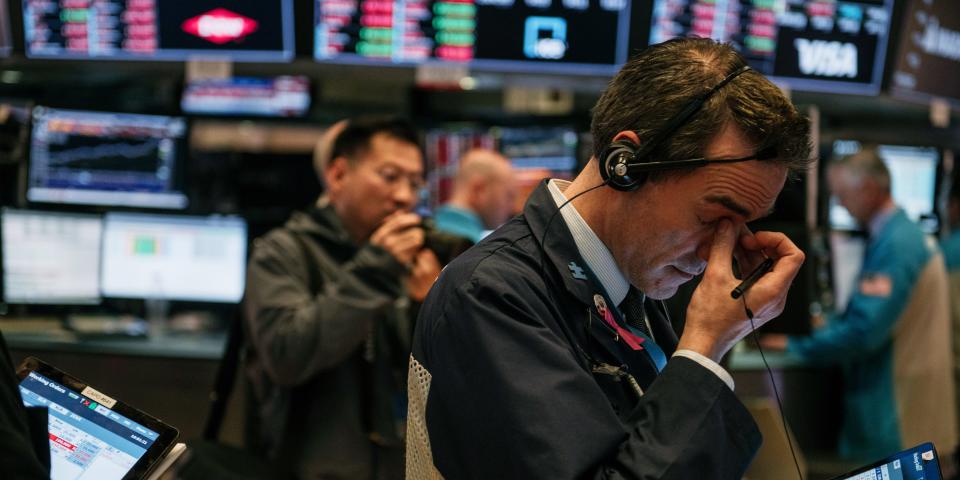JPMorgan’s Dubravko Lakos and Morgan Stanley’s Mike Wilson both see the end of the market rally.
Higher-for-longer Fed interest rates and a potential hard landing for the economy risk dragging equities.
The S&P 500 rallied 21% through the first seven months of the year, but now looks set for a monthly loss in August.
The S&P 500 is on pace for a monthly decline after big gains earlier this year, and two of Wall Street’s most prominent strategists think the stock market rally is over.
Dubravko Lakos, JPMorgan’s chief global stock strategist, said in a CNBC interview earlier this week that the market is capped, and he warned that investors are overly bullish in their positioning.
He also pointed to high stock values relative to earnings, a possible pullback in federal spending next year, and central bank policy remaining tight. Meanwhile, he’s skeptical there will be a soft landing in the economy.
“I just have a hard time believing that inflation is gonna come down, the Fed is going to be cutting rates, and growth will be just fine,” he said.
On Friday, Fed chief Jerome Powell said in a speech in Jackson Hole, Wyoming, that more policy tightening remains on the table.
And Morgan Stanley’s Mike Wilson said the latest evidence of a softening market was Nvidia’s blowout earnings beat this week and the failed market rally that followed.
“Remember, markets top on good news, and they bottom on bad news,” Wilson said in an interview with Bloomberg. “I can’t think of any better news then what we got from [Nvidia] on Wednesday…and we had a failed rally. That’s another negative technical signal that the rally is exhausted. We’re going to need a story to get people excited, and I don’t know what that story is.”
All year, a select few growth names have outperformed, but investors extrapolated that performance into the rest of the market, and it didn’t make that much sense.
“We feel like when this rally began really in May around AI, we think it broadened out too much,” Wilson said. “We’re bullish on AI for the longer term, however in the near term, it’s more of a cost, and there’s going to be a big investment phase.”
For the back half of 2023 Wilson said he’s focused on how sustainable the narrative will be around the small batch of growth names, and whether hawkish central banks will weigh on those prospects.
“I think that in these periods what happens is people’s views get directed by price action in the market,” he said. “They look for the market to tell them whether it’s going to be a hard landing or not. The odds of a recession are still higher than normal. Price action dictates opinion — that’s where we are, and if things continue to be weaker here then that narrative of a hard-landing could come back.”
Read the original article on Business Insider
Credit: Source link




